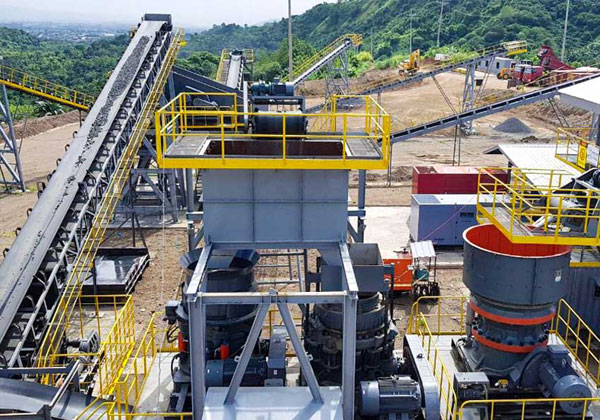A Lead-Zinc Ore Crushing Production Line is a vital process in the mining industry, where lead and zinc minerals are extracted from ore. The production line typically consists of several stages to ensure that the ore is crushed, screened, and separated before it undergoes further processing. Below is an overview of a typical lead-zinc ore crushing production line.

1. Primary Crushing Stage
The lead-zinc ore is initially extracted from the mine and fed into a primary crusher. Usually, a jaw crusher or gyratory crusher is used in this stage. The purpose of primary crushing is to reduce the large rocks (usually 600-1200 mm in size) into smaller sizes, typically around 150-300 mm. This makes the material easier to handle and transport to the next processing stage.
Jaw crushers are commonly chosen for this stage due to their robust design and ability to handle a wide range of materials. They have a high throughput and produce relatively uniform output sizes.
2. Secondary and Tertiary Crushing Stage
Once the ore has been reduced to smaller sizes in the primary stage, it moves to the secondary crushing stage. Here, cone crushers are typically used to further reduce the size of the ore, often to about 40-50 mm. If necessary, a tertiary crusher can be used for further size reduction. These crushers help achieve the final desired particle size for the subsequent stages of the processing.
Cone crushers are ideal for secondary and tertiary crushing because they provide fine crushing capabilities, offer high efficiency, and produce a consistent output.
3. Screening Stage
After the crushing stages, the ore is screened to separate particles according to size. The material is passed through vibrating screens with multiple mesh sizes to sort the crushed ore into different fractions. Larger pieces are sent back for further crushing, while smaller, suitable-sized particles are transferred to the next stage of the processing flow.
The vibrating screen plays a crucial role in ensuring that only the appropriately sized particles continue to the next stage, improving the overall efficiency of the production line.
4. Grinding Stage
In some cases, depending on the hardness of the ore, further size reduction may be necessary, and the material may undergo grinding. A ball mill can be used in this stage to reduce the ore to finer sizes (typically below 0.1 mm). This is crucial for effective mineral separation in the following stages of the processing line, such as flotation.
The grinding stage is often a key part of the process because it provides the optimal particle size for mineral recovery, especially in complex ores like lead-zinc, which require finely ground material for efficient flotation separation.
5. Flotation Process
After crushing, screening, and grinding, the material undergoes flotation to separate lead and zinc concentrates from the gangue minerals. The flotation process involves adding chemicals to the ore slurry, which makes the lead and zinc minerals hydrophobic. Air bubbles are introduced, and the hydrophobic minerals attach to the bubbles and float to the surface, where they are skimmed off as concentrate.
The lead and zinc concentrates are then further refined, often using gravity separation or flotation techniques, to produce high-purity lead and zinc metals.
The lead-zinc ore crushing production line plays a vital role in the extraction of these valuable metals. It includes several stages such as primary crushing, secondary crushing, screening, and grinding. After the ore is processed, flotation techniques are employed to separate and concentrate the lead and zinc minerals. This production line helps ensure the efficient extraction of lead and zinc, which are essential metals used in various industries, from batteries to construction and automotive manufacturing. Proper design, equipment choice, and process optimization are key factors in maximizing the efficiency and productivity of a lead-zinc ore crushing production line.

